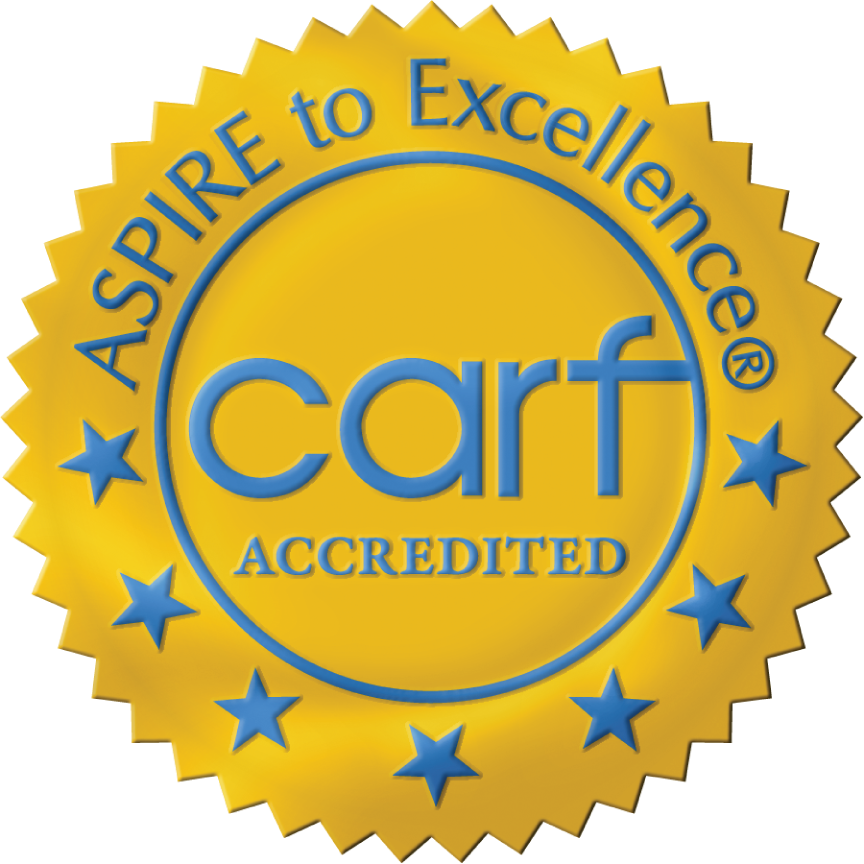
Benefits of the Horse-Human Connection for Healing Trauma in Recovery
What is Trauma?
Trauma is defined as someone’s response to a negative event or tragedy such as an accident, natural disaster or abuse. This could be anything that is experienced as psychologically unsafe, where the recipient felt in some way that they were at severe risk of danger. Those who have experienced trauma may suffer long-term effects which can have devastating effects on their relationships and quality of life.
Common symptoms of trauma may include:
- Flashbacks
- Nightmares
- Nausea
- Sweating
- Anxiety
- Depression
Many people may not experience severe long-term effects of trauma, however these memories and experiences may continue to have a negative effect on their lives and relationships if left unaddressed.
Healing Emotional Trauma
Healing from trauma is oftentimes a long journey with many highs and lows along the way.
While it is not easy, there is a light at the end of the tunnel. Trauma may be addressed through various therapy modalities including cognitive behavioral therapy (CBT), cognitive processing therapy (CPT), and prolonged exposure therapy (PE). These can be productive in helping to gain understanding of the events that took place and begin the healing process.
While these therapies are a great starting point, healing emotional trauma is not always as simple as talk-based therapy modalities. Even if the trauma was not a physical event by nature, the negative energy is nonetheless stored in the tissues of the body. Combining movement with talk therapy can be very powerful in processing trauma more effectively. One way that movement and talk therapies meet is through equine-assisted therapy.
5 Benefits of Connection Between Horses and Humans
1. Increased Self-Awareness and Mindfulness
Horses are designed to notice minor changes in their environment in order to detect any hint of danger to maximize their chances of survival. This sensitivity means that they are always on the lookout for visual, auditory or energetic shifts in everyone they encounter.
Oftentimes, people are unaware of the way they carry themselves as they move throughout the world. For example, someone may not realize that their slouched shoulders, shuffled feet and shifty eyes signal a lack of confidence and sense of defeatedness, which could invite a dominant horse to push into them and take their space. Or perhaps someone has very high energy, jerky movements, and a rapid heart rate, communicating to the horse that they feel unsafe. This would cause the horse to feel unsafe as well, and they may respond anxiously to training requests.
Work with horses can illuminate these habits and subliminal behaviors, providing an opportunity to cultivate mindfulness and connection to one’s own body.
2. Growth in Confidence and Assertiveness
Working with large animals such as horses requires some degree of bravery. Weighing in at 900-1,200 pounds, they are at least five times the size of the average human. As prey animals, they are always searching for safety and security. A large part of feeling secure in their environment comes from their trust in the leader of the herd to alert them of danger, guide them in the right direction, and attend to the basic needs of the herd like sourcing food and water. This role should be assumed by the handler while interacting with the horse, but the horse won’t trust you if you don’t trust yourself. Through practice and discipline, even the least confident person can develop the skills and cultivate the instincts needed for horses to trust in their leadership, which will allow for a more harmonious partnership overall.
3. Increased Empathy
One of the negative effects of trauma can be a decreased sensitivity to emotions and level of connection, either to yourself or other people. This is a result of the emotional numbing and withdrawal from others that takes place after painful experiences, which is your mind and body’s natural way of protecting you from further injury.
Working with horses requires a great deal of empathy, or it turns into a game of force and manipulation. Learning to connect with the vulnerability of another creature can help to grow in forgiveness of oneself, as well as grow in sensitivity to the struggles of other people.
4. Development of New Life Skills
Addiction recovery requires an overhaul on your whole life. Substance use is oftentimes very integrated into daily rhythms, and the habits are difficult to rewire. Working with animals can help to stimulate new neuron pathway formation, and can create a safe space to process normal human emotion in a healthy way.
Horses have a mind of their own and don’t always share the handler’s ideas. This can require a great amount of patience and self control, as well as the ability to persevere with a particular request or command. This could test the client’s ability to tolerate various levels of energy or resistance, and they can practice responding in an integrated fashion instead of turning to unhealthy patterns.
5. Healing Through Real Relationship
The healing power of relationship and interaction with horses is perhaps the most compelling benefit of equine-assisted therapy. While trauma may be inflicted in a single moment, it is not healed overnight. Oftentimes, our deepest wounds have come from people who were closest to us. Corruption of those pivotal relationships such as parental, spousal, and familial connections have great capacity to wreak havoc in our emotional lives and impact the way we interact with the broader population.
While it may seem like a risk to allow yourself to be open to others again, relationships cannot flourish without vulnerability. Horses are not judgemental. They cannot lie, and they have an ability to connect with other beings on a deep level. Forming an emotional connection with them can often feel like a more accessible starting point for people struggling with addiction who have a history of severe abuse or neglect.
It is worth mentioning that developing a connection with horses does not merely supply an analogy for connection with people; rather, horses are independent sentient creatures with whom we can cultivate actual relationships. They are highly perceptive of humans, and humans can learn to attune themselves to the horse. Connection with these majestic animals can be a humbling and transformative experience, disposing people to greater openness in connection with other humans.
Mounted work with horses has the added benefit of being carried by the equine partner. This simple act can be incredibly effective in helping to heal trauma. Movement and physical connection to another living being are both aspects of deeper healing that are highly effective but inaccessible in traditional talk therapy settings. The horse introduces an aspect of nurturing to the therapeutic setting that brings a healing balm to the child at heart of the wounded adult.
Find Deeper Healing Through Connection Today
Loneliness and emotional trauma can feel isolating, but you don’t have to go through it alone. If you or a loved one are seeking deeper healing through connection with horses, Bluff Augusta may be the perfect place to start. Contact us online today, or call [phone_linked] to heal the wounds of the past and step into a new future of hope.








